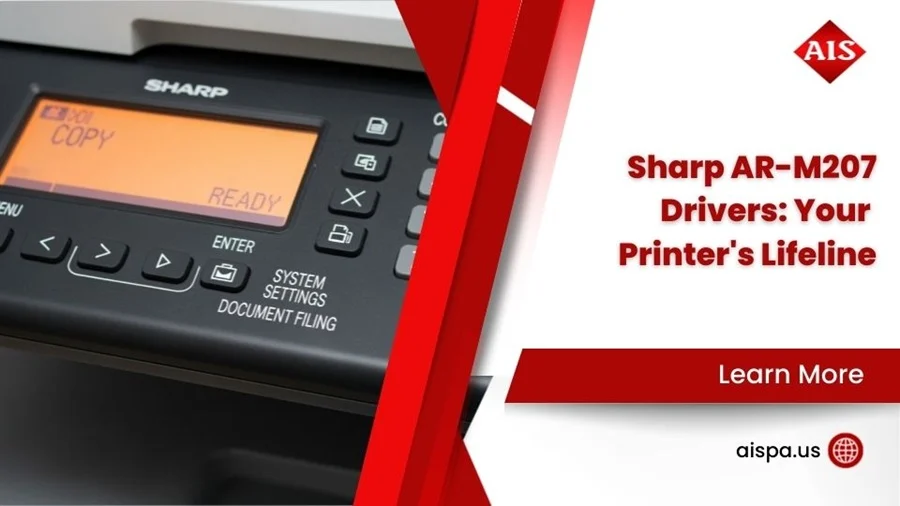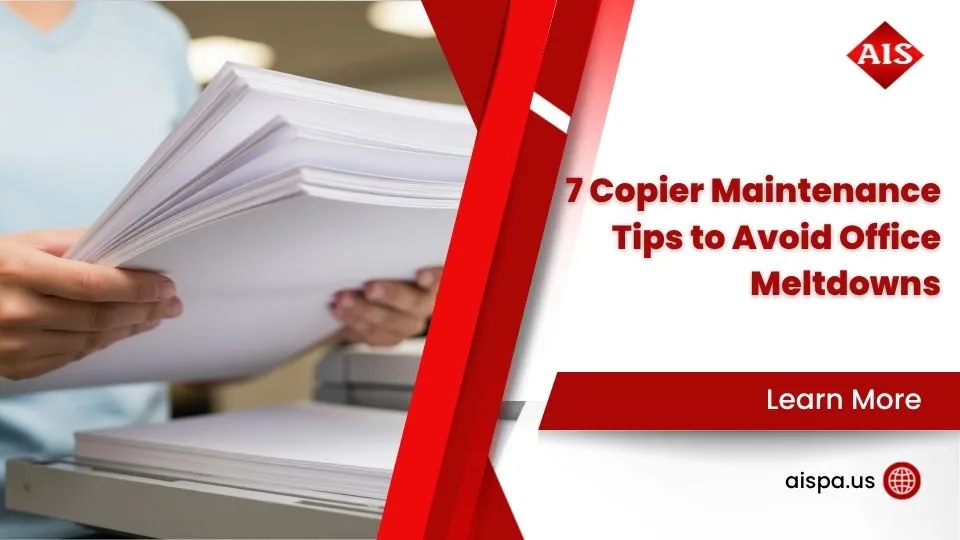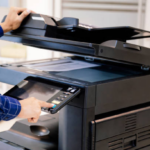Eco-Friendly Copiers That Won’t Cost the Earth (Literally!)
Eco-friendly copiers are office machines designed to minimize environmental impact through energy-efficient operation, sustainable materials, and waste reduction features. These devices help businesses cut costs while supporting sustainability goals.
Key features to look for:
- ENERGY STAR certification – reduces energy consumption by 40-55%
- Duplex printing – cuts paper usage in half automatically
- Long-life components – ceramic drums last millions of prints
- Toner recycling programs – manufacturer take-back services
- Heat-free technology – eliminates energy-intensive heating processes
Traditional copiers are among the most energy-hungry devices in your office. They consume significant electricity, generate heat that increases air conditioning costs, and contribute to paper waste through single-sided printing defaults. The EPA estimates that copiers meeting current ENERGY STAR requirements use 40 to 55 percent less energy than standard models.
The business case is clear. Green buildings have 20% lower maintenance costs than conventional ones, and employees in eco-friendly workplaces perform 26% better on cognitive tasks. For Philadelphia businesses facing rising utility costs and growing sustainability expectations from clients, choosing the right copier isn’t just about environmental responsibility – it’s about operational efficiency and competitive advantage.
Modern eco-friendly copiers address three critical areas: energy consumption through smart power management, material waste through duplex printing and digital workflows, and component longevity through durable ceramic drums and modular designs. Companies like Kyocera have pioneered dual-purpose toner cartridges that eliminate separate waste containers, while Epson’s Heat-Free Technology reduces energy usage by up to 85% compared to traditional laser devices.
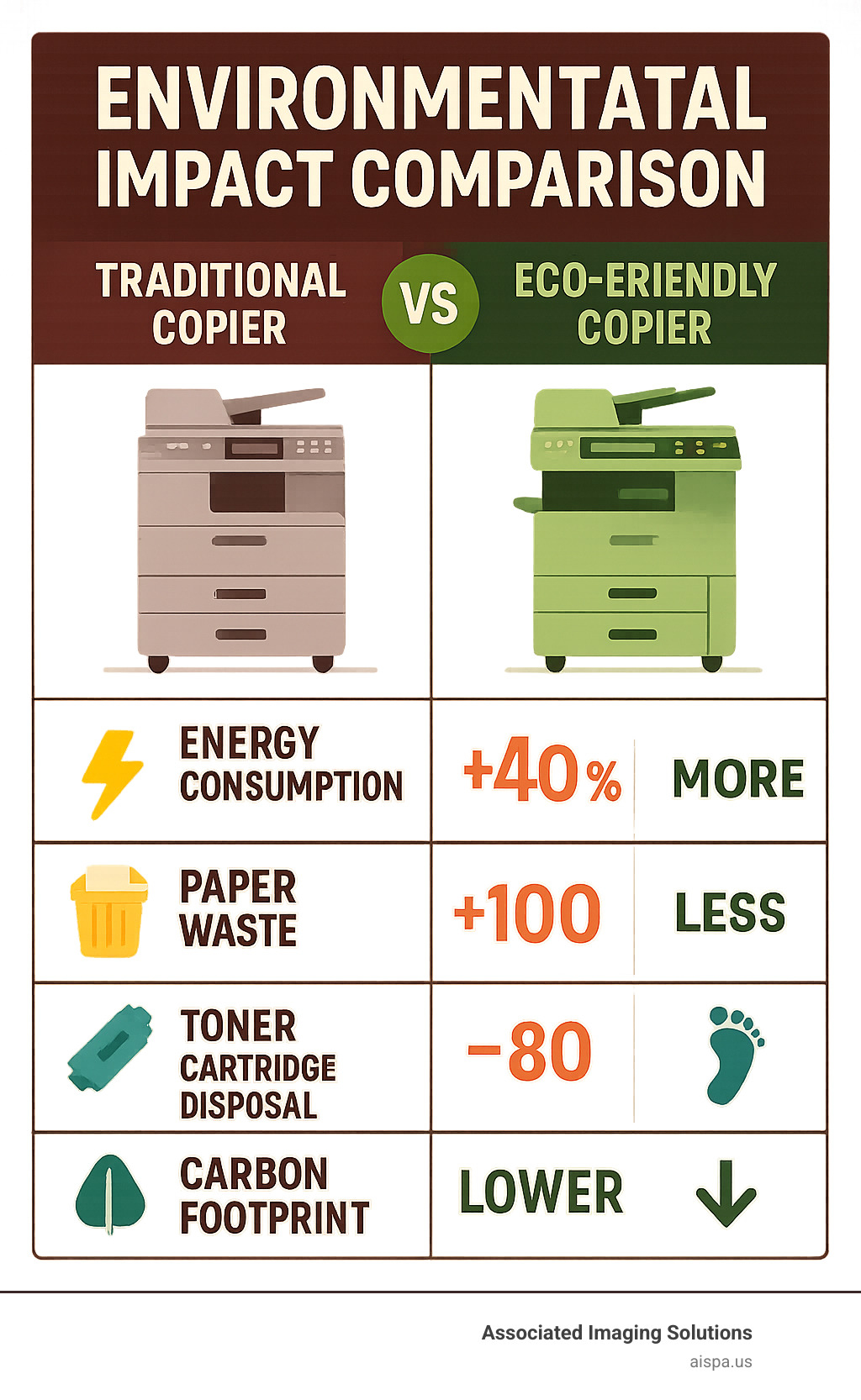
The Hidden Costs of Conventional Printing
Your office copier might seem like a harmless piece of equipment, quietly humming away in the corner. But here’s the thing – that innocent-looking machine is actually creating a much bigger environmental impact than most businesses realize.
Let’s start with the obvious culprit: paper consumption. The average office worker uses about 10,000 sheets of paper per year. That’s roughly 20 reams, and when you multiply that across your entire team, the numbers get pretty staggering. All that paper has to come from somewhere, and unfortunately, that somewhere is our forests.
Deforestation remains one of the most serious consequences of our printing habits. Every tree that gets cut down for paper was once pulling carbon dioxide out of the air and providing habitat for wildlife. When we print single-sided documents (which most offices still do by default), we’re essentially doubling our contribution to this problem. It’s like ordering two pizzas when one would do – wasteful and unnecessary.
But paper is just the beginning. Traditional copiers are notorious energy hogs. These machines consume significant electricity throughout the day, not just when they’re actively printing. Many older models stay in a high-power standby mode, drawing juice 24/7. This constant energy drain directly increases your office’s carbon footprint and contributes to greenhouse gas emissions, especially if your local power grid relies on fossil fuels.
The heat generated by conventional copiers creates another hidden cost. All that excess warmth makes your air conditioning work overtime during summer months, creating a double hit on your energy bills and environmental impact.
Then there’s the waste problem that most people never think about. Toner cartridge disposal is a massive environmental issue. These plastic cartridges can take up to 1,000 years to decompose in landfills. Most offices go through dozens of cartridges annually, and the majority end up as landfill waste rather than being properly recycled.
The materials used in conventional copiers often include non-recyclable plastics and components that can’t be easily separated for proper disposal. When these machines reach the end of their life, they frequently become electronic waste that sits in landfills for decades.
Understanding your office’s environmental impact is the first step toward making smarter choices. If you’re curious about more efficient alternatives, learning What is an MFP Printer? can help you explore options that significantly reduce these hidden costs. You can also calculate your current impact using this helpful carbon footprint calculator.
The good news? Eco-friendly copiers are specifically designed to address every single one of these issues, turning your office equipment from an environmental liability into part of your sustainability solution.
Key Features to Look For in Eco-Friendly Copiers

Shopping for eco-friendly copiers can feel overwhelming with all the technical jargon and marketing claims. But here’s the good news: you don’t need a PhD in environmental science to spot the real deal. This section will detail the specific hardware and software features that make a copier environmentally friendly, helping businesses make an informed choice.
Think of choosing an eco-friendly copier like picking a fuel-efficient car. You want to look under the hood for the features that actually make a difference, not just the shiny exterior promises.
Energy-Efficient Operation
The heart of any green copier beats with energy efficiency. When you see that ENERGY STAR certification label, you’re looking at a machine that’s proven to sip electricity rather than gulp it down. These certified devices use 40 to 55 percent less energy than their power-hungry cousins. That’s not just good for the planet – it’s fantastic for your monthly utility bills.
Smart sleep modes are like having a copier that knows when to take a nap. When nobody’s around to use it, the machine automatically powers down to low-power states, saving energy without any effort on your part. It’s similar to how your smartphone dims its screen when you’re not using it, except the savings are much more significant.
Here’s where things get really interesting: low-melt toner technology and heat-free printing concepts. Traditional copiers are basically tiny furnaces, heating up toner to stick it onto paper. But newer eco-friendly models need much less heat – or sometimes no heat at all. Some advanced models can reduce energy usage by up to 85% compared to traditional laser devices.
The difference in your office environment is noticeable too. Less heat means your air conditioning doesn’t have to work overtime during summer months. You can explore certified products and compare energy ratings using the EPA’s product finder.
Sustainable Materials and Long-Life Components
The greenest copier is one that doesn’t need replacing every few years. Look for machines built with recycled plastics and bio-based plastics – materials that give old waste a second chance at life instead of demanding fresh resources from the earth.
Modular design is your friend here. Instead of tossing the entire machine when one part breaks, you can swap out individual components. It’s like being able to replace just the worn tires on your car instead of buying a whole new vehicle.
The real star of longevity is the long-life ceramic drum. While regular drums might handle hundreds of thousands of prints, ceramic drums can power through millions of pages. Some manufacturers have perfected this technology so well that their drums last practically forever in normal office use.
Durable developer units work hand-in-hand with long-life drums to extend your copier’s lifespan. The goal is simple: fewer replacements mean less manufacturing, less shipping, and less waste heading to landfills. Plus, you’ll spend less time dealing with maintenance headaches. Curious about typical equipment lifespans? Check out our detailed guide on How Long Do Printers Last?.
Paper and Waste Reduction Features
Even as we move toward digital everything, most offices still need paper. The trick is using it wisely. Duplex printing is probably the easiest win you’ll ever get in sustainability – it automatically prints on both sides of the page, cutting your paper use in half without changing how you work.
Duplex scanning is equally clever, capturing both sides of a document in one pass. This speeds up your workflow while supporting those digital document workflows that reduce paper needs altogether.
Secure print release might sound like a security feature (and it is), but it’s also a waste-buster. Documents only print when you’re standing right there at the machine, which means no more forgotten print jobs piling up in the tray, destined for the recycling bin.
Some manufacturers have gotten creative with dual-purpose toner systems. When your toner cartridge runs empty, it becomes the waste toner container. It’s brilliant in its simplicity – one cartridge serves two purposes, cutting plastic waste significantly.
These features work together to create a printing environment that’s both efficient and environmentally conscious. For more insights on making sustainable choices, explore our guide to Best Printer Paper for Quality and Sustainability.
Beyond the Hardware: Building a Green Printing Strategy

Choosing the right eco-friendly copiers is like buying a fuel-efficient car – it’s a great start, but you won’t see the full benefits unless you change how you drive. A truly sustainable office goes beyond just having green hardware. It’s about changing your daily habits, streamlining workflows, and getting everyone on board with a greener mindset.
Think about it this way: you could have the most environmentally friendly copier on the planet, but if your team still prints every email and makes five copies of every document “just in case,” you’re missing the bigger picture. Building a comprehensive green printing strategy means looking at how work actually gets done and finding smarter ways to do it.
Embracing Digital Workflows and Cloud Integration
The holy grail of sustainable printing is actually not printing at all. Modern copiers have evolved into sophisticated document management hubs that can help you achieve this goal. Instead of thinking of your copier as just a machine that puts ink on paper, consider it your gateway to a paperless office.
Scan-to-email and scan-to-cloud features are game-changers here. Picture this scenario: someone drops off a contract that needs to be reviewed by your entire team. Instead of making six copies, you scan it once directly to your shared cloud folder. Everyone can access it instantly, make digital notes, and collaborate without a single sheet of paper changing hands.
These digital document workflows don’t just save trees – they make your business more efficient. Documents can’t get lost in the shuffle, multiple people can work on them simultaneously, and you can access everything from anywhere. Mobile printing takes this a step further, letting you print only what you absolutely need, right from your phone or tablet.
The beauty of secure print release is that it eliminates those stacks of forgotten documents sitting in printer trays. You send your job to the copier, but it only prints when you’re standing there to collect it. No more waste from documents that get printed and never picked up.
Want to get started with digital workflows? We can show you How to Scan a Paper on a Printer and help you set up robust Corporate Data Backup systems to keep your digital files safe and accessible.
The Role of Toner Recycling Programs
Even with the best digital workflows, some printing is inevitable. The question is: what happens to those empty toner cartridges? This is where manufacturer take-back programs become your environmental superheroes.
These programs create what’s called closed-loop recycling – a fancy way of saying that your used cartridge doesn’t end up in a landfill but gets transformed into something new and useful. Leading manufacturers collect used cartridges and turn them into park benches, pens, and even asphalt for roads. It’s pretty amazing when you think about it – your old toner cartridge could become part of the playground where your kids play.
The impact of these programs on reducing landfill waste is substantial. Plastic toner cartridges can sit in landfills for centuries, but when they’re properly recycled, those materials get repurposed into valuable new products. It’s like giving your office supplies a second career.
Participating in these programs is usually as simple as boxing up your empty cartridges and sending them back to the manufacturer. Many companies even provide prepaid shipping labels, making it effortless to do the right thing. Understanding How to Empty Waste Toner Box properly and exploring Compatible Toner Cartridge options can further improve your recycling efforts.
Optimizing Your Fleet with Managed Print Services (MPS)
Managing multiple copiers and printers across an office can feel overwhelming. You might have one department that prints everything in triplicate while another barely uses their machine. That’s where Managed Print Services (MPS) comes in as your secret weapon for building a truly green printing strategy.
Print usage analysis is like getting a health check-up for your printing habits. We can show you exactly where paper and energy are being wasted, which machines are working too hard, and where you have opportunities to go digital. Sometimes the results are eye-opening – you might find that 40% of your printing could easily be replaced with digital alternatives.
Workflow optimization takes this data and turns it into action. We might set up automatic duplex printing as the default, implement rules that require approval for large print jobs, or identify processes that can go completely digital. It’s about making the sustainable choice the easy choice for your team.
Proactive maintenance keeps your eco-friendly copiers running at peak efficiency. A well-maintained machine uses less energy, produces better quality output, and lasts longer. Supply management ensures you’re never over-ordering supplies or running machines that aren’t properly optimized.
The beauty of MPS is that it combines all your printing costs into simple per-page pricing, making budgeting easier while encouraging more thoughtful printing habits. When you can see the true cost of every page, it’s easier to make smart decisions about what really needs to be printed.
Looking for guidance on choosing the right partner? Check out our advice on finding the Right Print Management Company and our 10 Tips for Choosing the Right Printer Leasing Company. We’re here to help you build a printing strategy that’s good for both your business and the planet.
Frequently Asked Questions about Eco-Friendly Copiers
Choosing the right eco-friendly copiers can feel overwhelming with all the technical specifications and environmental claims out there. We hear questions every day from businesses across Philadelphia, from small startups in Center City to large corporations in the suburbs. Let’s tackle the most common ones together.
What certifications indicate a copier is eco-friendly?
Think of environmental certifications as your trusted shopping companions – they do the homework for you. When you see these labels on a copier, you know it’s been independently tested and verified to meet strict environmental standards.
ENERGY STAR is the certification you’ll see most often, and for good reason. It focuses squarely on energy efficiency, ensuring devices consume significantly less power during operation and when sitting idle. Remember those statistics we shared earlier? ENERGY STAR certified copiers use 40 to 55 percent less energy than standard models. That’s like getting almost half your electricity bill back just from choosing the right machine.
EPEAT (Electronic Product Environmental Assessment Tool) takes a much broader view of environmental impact. Instead of just looking at energy consumption, EPEAT evaluates the entire product lifecycle – from the materials used in manufacturing to how easily the device can be recycled when it reaches end-of-life. Products earn Bronze, Silver, or Gold ratings based on how many environmental criteria they meet. It’s like a report card for the planet.
Blue Angel might be less familiar to American businesses, but this German certification sets some of the strictest environmental and health protection criteria in the world. When a copier earns the Blue Angel seal, it means it meets rigorous standards for energy efficiency, produces minimal emissions like ozone and fine dust, uses recyclable materials, and avoids hazardous substances entirely.
These certifications aren’t just marketing fluff – they represent real, measurable environmental benefits that translate into cost savings for your business.
How does the total cost of ownership compare for eco-friendly models?
Here’s where the math gets exciting! While you might pay a similar upfront price for an eco-friendly copier, the real savings show up month after month in your operating costs. It’s like buying a fuel-efficient car – the purchase price might be comparable, but you’ll smile every time you fill up the tank.
Energy savings are usually the biggest surprise for our clients. Those ENERGY STAR features and smart power management systems can cut your electricity costs dramatically. When a copier uses 40 to 55 percent less energy than standard models, that reduction shows up directly on your utility bill. For a busy office, we’re talking about hundreds of dollars in annual savings.
Paper and consumable costs drop significantly too. Features like automatic duplex printing cut your paper usage in half immediately. Long-life components like ceramic drums mean you’re not constantly buying replacement parts. Some manufacturers have gotten creative with dual-purpose toner systems that eliminate waste containers entirely, reducing your supply expenses even further.
Maintenance savings often catch people off guard. When components are built to last millions of prints instead of thousands, you’re calling for service less often and replacing parts less frequently. Less downtime means better productivity, and fewer service calls mean lower maintenance costs. It’s a reliability bonus that comes with going green.
When you add up all these savings over the typical lifespan of a copier, eco-friendly models often deliver a significantly lower Total Cost of Ownership than their traditional counterparts. Your accountant and your environmental officer will both be happy.
Can I be eco-friendly if I lease a copier instead of buying one?
Absolutely! Leasing might actually be the most eco-friendly choice you can make. It’s a common misconception that you need to own equipment to be environmentally responsible.
Access to the latest green technology is one of leasing’s biggest environmental advantages. Instead of being stuck with older, less efficient equipment for years, leasing lets you upgrade regularly to the newest, most energy-efficient models. As manufacturers continue innovating with heat-free printing and advanced power management, you’ll always have access to the most environmentally friendly technology available.
Managed Print Services integration is where leasing really shines for sustainability. Reputable leasing companies like us don’t just drop off equipment and disappear. We help you optimize your entire print environment, analyzing usage patterns to identify waste, implementing policies like default duplex printing, and even helping you transition to more digital workflows. This expert guidance ensures you’re getting maximum environmental benefit from your equipment.
Responsible end-of-life management happens automatically with leasing. When your lease term ends, we handle the proper recycling or refurbishment of the equipment. This ensures copiers don’t end up in landfills and that valuable materials get recovered and reused. It’s peace of mind that your environmental responsibility extends beyond just using the equipment.
For businesses across Pennsylvania – whether you’re in Philadelphia, Pittsburgh, Harrisburg, or anywhere in between – leasing provides the flexibility to stay current with green technology while getting expert support for your sustainability goals. If you’re considering this path, our guide on What to Look For When Leasing a Copier can help you make the best choice for your business and the environment.
Conclusion
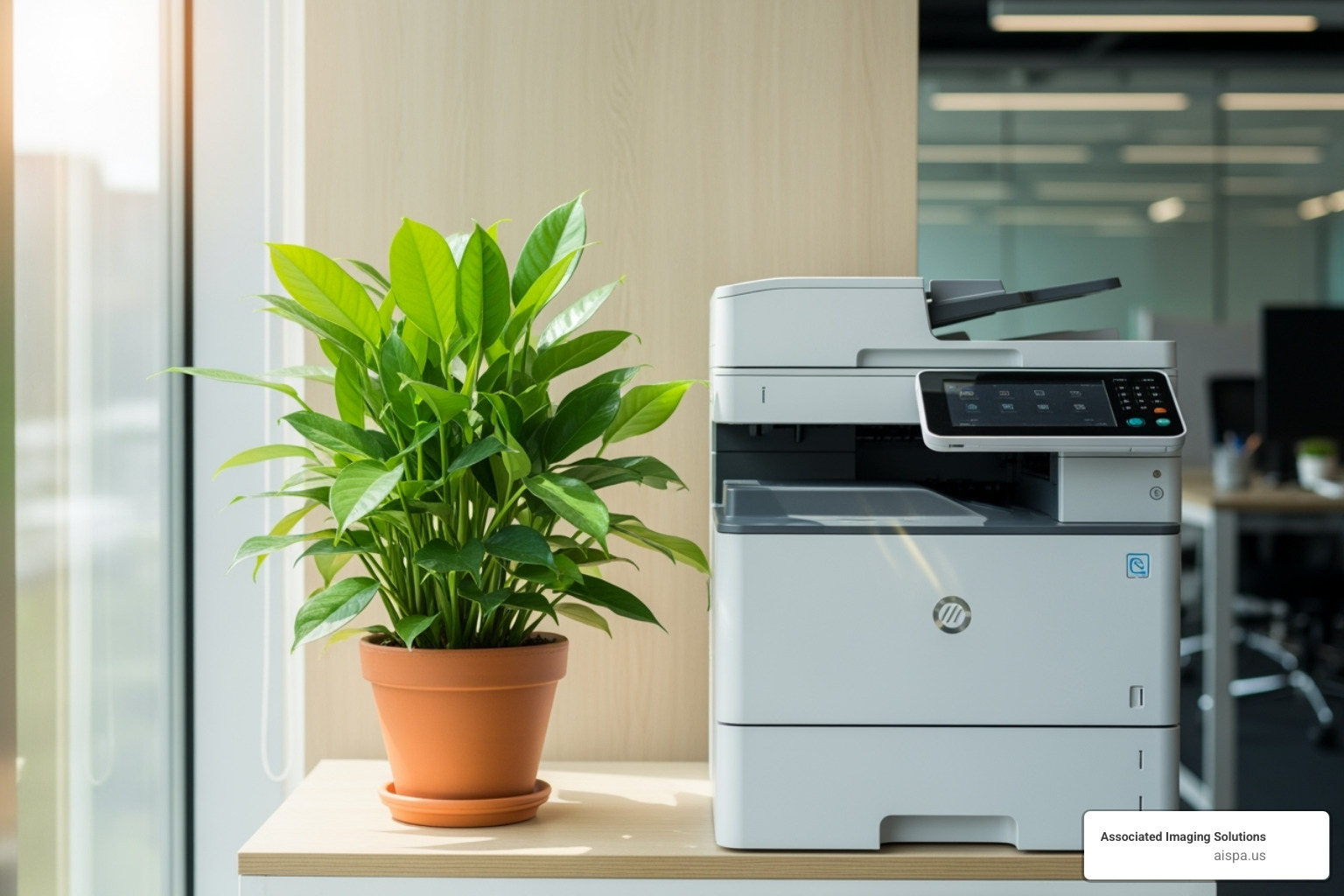
Making the switch to eco-friendly copiers isn’t just about doing the right thing for our planet – though that’s certainly important. It’s about making a smart business decision that pays dividends in multiple ways. Your bottom line will thank you just as much as the environment will.
Think about everything we’ve covered together. Those ENERGY STAR-certified machines that slash your electricity bills by up to 55%. The duplex printing features that cut your paper costs in half with a simple default setting. The long-life ceramic drums that last for millions of prints, saving you countless service calls and replacement headaches. These aren’t just nice-to-have features – they’re money-saving powerhouses wrapped in environmentally responsible packaging.
But here’s what really excites us: the change goes far beyond the hardware sitting in your office. When you accept digital workflows and cloud integration, you’re not just reducing waste – you’re streamlining how your team works together. Those toner recycling programs don’t just keep plastic out of landfills; they often come with cost incentives that put money back in your pocket. And Managed Print Services? That’s like having a sustainability expert on your team, constantly finding new ways to optimize your operations.
The beauty of this approach is how it all works together. Your eco-friendly copier becomes the cornerstone of a greener office strategy that touches every aspect of your document management. Employees feel good about working for a company that cares about the environment. Clients notice your commitment to corporate social responsibility. And you sleep better knowing you’re building a more sustainable business.
Whether you’re based right here in Philadelphia or anywhere across Pennsylvania – from the busy streets of Pittsburgh to the historic charm of Lancaster, from the innovation hubs of King of Prussia to the growing communities in Scranton, Altoona, Bethlehem, Carlisle, Chester, Doylestown, Easton, Erie, Harrisburg, Hazleton, Johnstown, Lebanon, Media, New Castle, Norristown, Pottstown, Reading, West Chester, Wilkes-Barre, or Williamsport – our team at Associated Imaging Solutions understands the unique needs of Pennsylvania businesses.
We’ve helped countless companies make this transition, and we’d love to help you too. Because at the end of the day, choosing sustainable technology isn’t just about the copier you buy or lease – it’s about the future you’re building, one thoughtful decision at a time.
Explore our range of copiers and printers and let’s start building your green printing strategy together.




